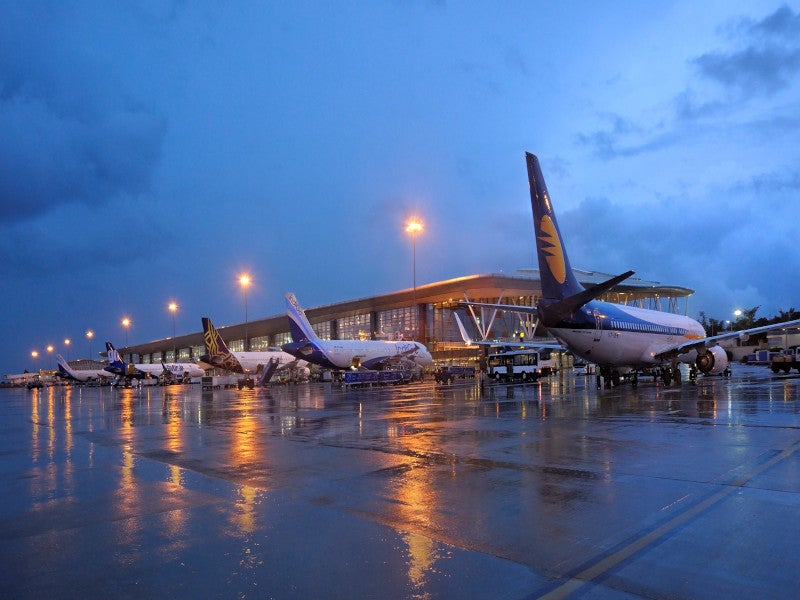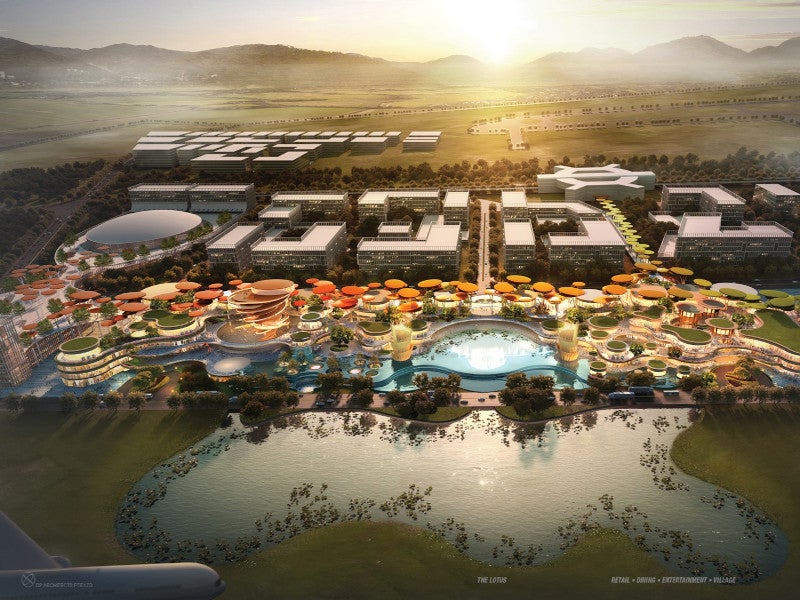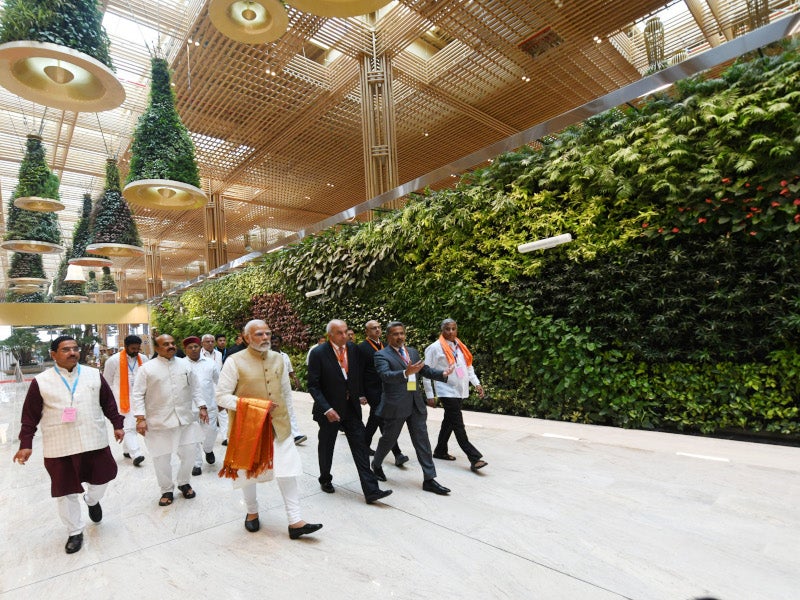The Kempegowda International Airport, also known as the Bangalore (BLR) Airport, has been operational since May 2008.
The airport handled 31.91 million passengers (28.12 million domestic and 3.78 million international passengers) in the year ending March 2023.
It is South India’s busiest airport and the third-largest airport in the country.
The airport, which replaced the old HAL Bangalore International Airport, is located in Devanahalli, 40km outside of the city of Bengaluru, India. It is spread over 4,000 acres of land.
Bangalore International Airport Limited (BIAL) designed, built, owns and operates the first greenfield private sector-owned and operated airport in India.
The airport construction began in July 2005 and the project’s first phase (conceived in 1993) got underway following endless government and airport authority negotiations.
The terminal and airport went through some last-minute design changes in late 2005 to accommodate an increase in the expected passenger traffic for the projected opening date in 2008.
The redesign of the airport project was based on the revision of the traffic forecast done in June 2005.
The redesign included an increase in the size of the passenger terminal building, the number of aircraft stands, taxiways, passenger boarding bridges and the main access road, enabling the airport to match the expected traffic in the coming years.
The outline development plan of Bangalore International Airport Area Planning Authority stated that no development will be allowed that destroys the natural river valley network in Doddaballapur, Devanahalli and Vijayapura in the outskirts of the city.
BIAL predicts that by 2028, the airport’s annual passenger traffic will reach 60 million.
The need and background of the international airport
Bengaluru is known as the Silicon Valley of India and is one of the largest biotechnology hubs in the country. Many business commentators have stated time and time again that international airport facilities for Bengaluru are essential for its continuing success in both commercial areas and in the tourist industry.
The airport was originally intended to accommodate 3.5 million passengers a year but was redesigned to handle 12 million passengers. The redesign resulted in an increase in the size of the terminal, the number of aircraft stands, new taxiway layouts and supporting infrastructure.
Private promoters hold a 74% stake in BIAL, while the state holds the remaining 26%. The project was undertaken by a foreign consortium consisting of Siemens, Zurich Airport and Larsen and Toubro. These three companies all hold equity in the project although now overall operations and financial control would still fall to the AAI.
In November 2009, Zurich Airport sold a 12% stake in the airport to GVK Power & Infrastructure (GVKPIL) for $98.5m. GVKPIL acquired 17% interest from Larsen and Toubro in December 2009 and another 14% from Siemens in October 2011.
The shareholding of the project works out includes AAI 13%, Karnataka Government 13%, Unique Zurich Airport 5%, Siemens Project Ventures 26% and GVKPIL 43%.
Design and facilities of the new international airport
The passenger terminal is a single, four-level building capable of accommodating international and domestic operations. The basement houses the retail storage, rest areas and services.
The arrival and departure areas are separated vertically with a modern, simple, straight-ahead flow system. The terminal is designed for ease of operation and minimum maintenance.
The total floor area is approximately 73,347m². The terminal building is designed to accommodate 2,300 passengers at peak times. The design reflects the best industry practice and caters for 24-hour operations, under all weather conditions. All facilities meet IATA standards.
There are 53 common-use terminal equipment-enabled check-in counters and 18 self-check-in counters. A new VIP lounge was inaugurated at level one of the terminals on 21 January 2011.
The airport has 40 gates and eight air bridges, including one double arm and nine remote bus bays. There are a total of 42 aircraft stands, all of which have a fuelling pit.
A car park for 2,000 cars was built in front of the terminal building at ground level.
The airport currently has one runway which can accommodate all types of aircraft, including the Airbus A380. The runway, orientated 09/27, is 4,900m (16,076ft) by 45m (150ft) with light-paved shoulders making it 60m (200ft).
A second runway commenced its operations in December 2019. The airport is the first in the country to have parallel runways, which allow landing and take-off at the same time.
Kempegowda International Airport terminal expansion
An expansion of the passenger Terminal 1 began in June 2011 at an estimated cost of $221m (INR10bn). The expansion doubled the terminal space and increased the airport’s passenger handling capacity from 11.6 million to 17 million per year.
The expanded terminal is 150,556m² in size and has 90 check-in counters, 30 Common Use Self Service kiosks, 24 emigration and 24 immigration counters, 48 security pedestals and 15 baggage reclaim belts. The seating capacity is increased to 5,300. A new VVIP building to the west of the terminal is also built.
In 2013, the expanded terminal began to open in phases.
Terminal 1 (T1) at the airport covers an area of 1,63,535m2 and has a designated capacity to handle 26.5 million passengers a year. The capacity can be further extended to a maximum of 33.3 million passengers a year.
The construction of a second new terminal (T2) was started in October 2018. The new terminal was inaugurated in November 2022. It began domestic operations with Star Air, one of India’s fastest regional airlines, in January 2023.
Located on the northeast side of T1, the newly built T2 covers an area of 255,661m2 and can accommodate 25 million passengers a year.
A 4.4km-long access road called the Terminal Boulevard was also opened to provide easy accessibility to T2.
Cargo village at the international airport
The airport’s cargo village, spread over 11 acres of land, began operations in early January 2009. It is expected to strengthen commerce and trade in Bengaluru, ensuring speedy clearances of import and export consignments from the cargo terminals at the airport.
An investment of roughly $2.5m (INR120m) has been made towards the facility, which was completed over a period of ten months. The facility is housing 120 freight forwarders and 80 custom house agents.
Partners for airport services
Bangalore International Airport is the first airport in India to operate under a truly open-access model. This allows every qualified fuel supplier to use the facility against a fixed throughput fee and allows airlines to get the best fuel prices available in the market.
BIAL has selected its strategic partner for the new airport’s aviation fuel facility. The consortium is Indian Oil / Indian Oiltanking / Skytanking. Indian Oil is the largest oil company and the largest aviation fuel company in India.
Skytanking is a major independent jet fuel-handling company that operates various aviation fuel facilities worldwide, especially in Europe and the US. It is owned by the Hamburg-based company Marquard and Bahls. Indian Oiltanking is a 50/50 joint venture between Indian Oil and Marquard and Bahls. Each party holds one-third of the equity of the consortium.
BIAL has also selected catering partners: LSG Sky Chefs and Taj SATS. Each of the selected consortiums is responsible for the design, construction, finance and operation of the flight kitchen at the new Bangalore International Airport. The combined investment is over $14m (INR700m) and the duration of the contract is 15 years. BIAL may award a third license for air catering at a later date.
In January 2023, BIAL selected Air India SATS Airport Services to design, build, finance, operate and maintain a greenfield logistics park at the airport for a period of 15 years.
Road and rail infrastructure
The new airport is 40km (25 miles) outside the city and so a new high-speed rail link project has been proposed. A special purpose vehicle Bangalore Airport Rail Link Limited (BARL) is building the project on a build, transfer, operate model. The project is being funded by the Government of India and the Government of Karnataka.
Bangalore Metropolitan Transport Corporation runs eleven bus routes from locations in the city to connect to the new airport. The airport can be reached through Hebbal via Bellary Road, through NH-Yelahanka people can also reach BIAL through Yelahanka via Vidyaranyapura, where traffic is less congested.
BMTC has 46 Volvo buses plying to the airport and the number of buses on each route ensures a frequency of at least one every 30 minutes. The buses are equipped with luggage racks and can carry up to 30 passengers on each trip.
The Indian railway authority is also planning to construct a railway terminal at the airport to run a special shuttle from the Cantonment railway station to the new airport.
Contractors involved in the international airport
Kaufmann and Van der Meer Planer of Switzerland provided design services for the airport. Larsen and Toubro of India was responsible for the civil engineering and construction work that began in July 2005.
BIAL awarded a contract to Siemens Industrial Solutions and Services Group and Siemens India for the job of equipping the airport in Bangalore with technical systems.
The $75m contract included the supply, engineering and installation of airfield lighting, IT and communication systems, the baggage handling system as well as the power supply and the building services automation system.
IBM supplied Smart Airport Enabler – an airport operations management system.
Larsen & Turbo executed the terminal expansion project, which was designed by HOK






